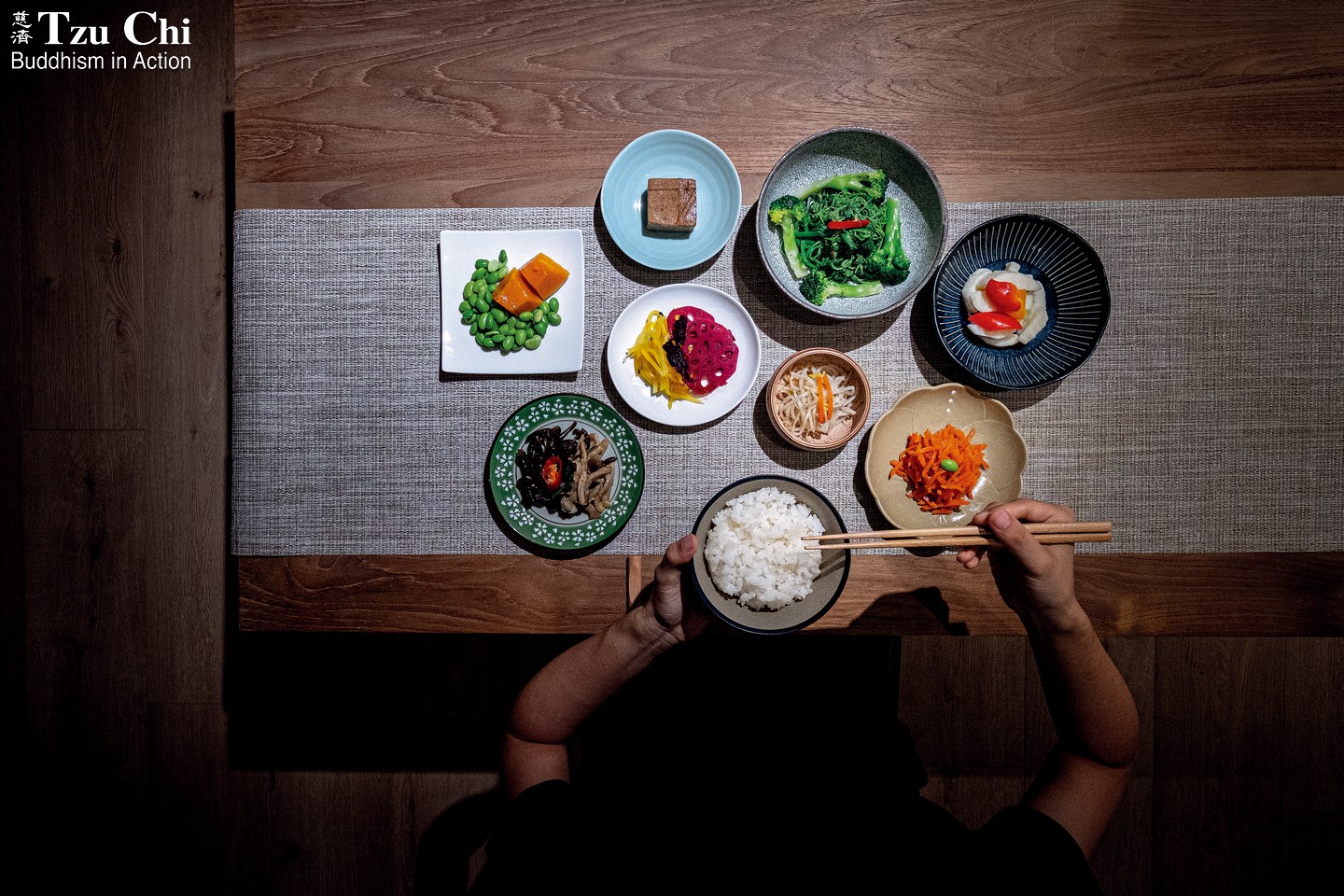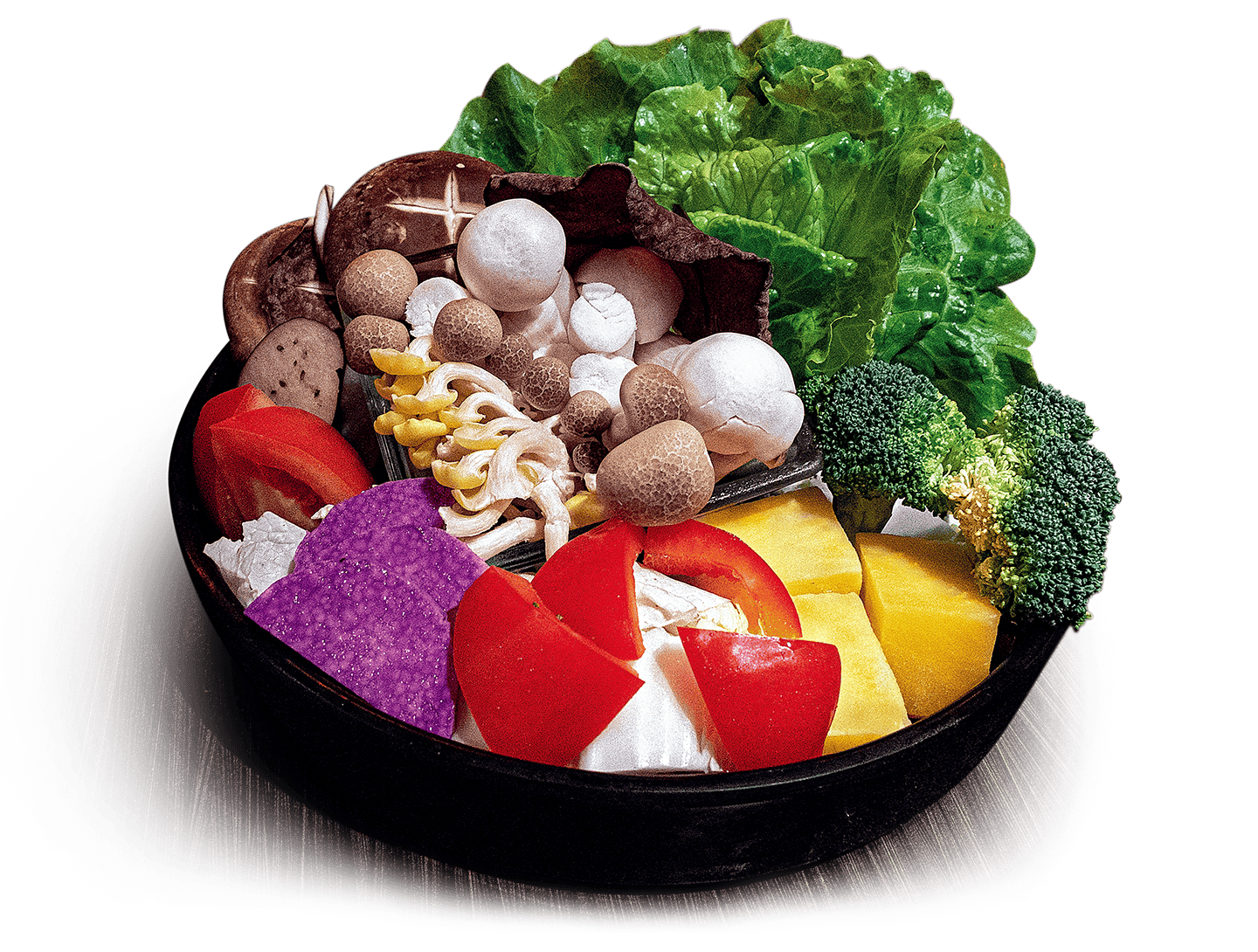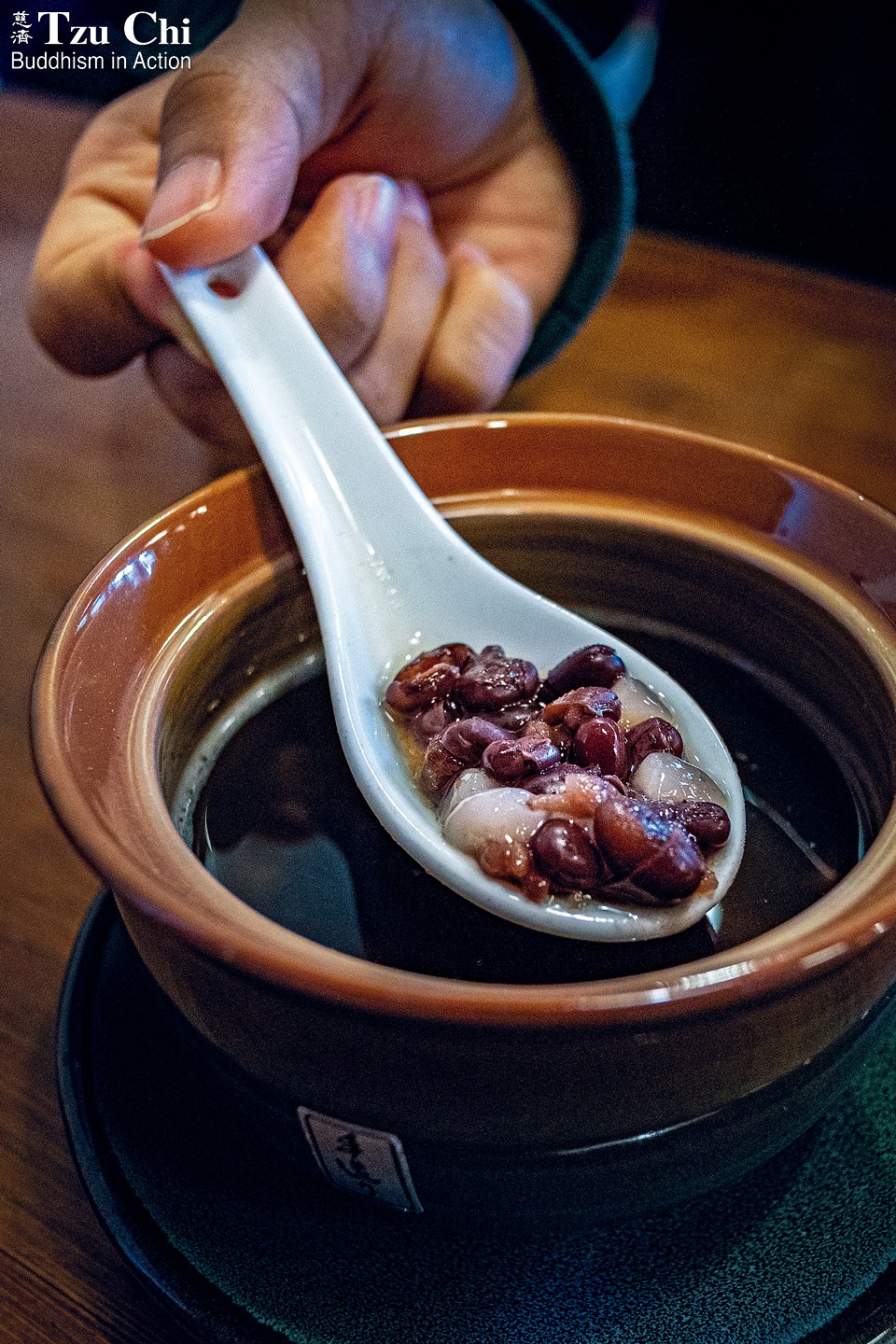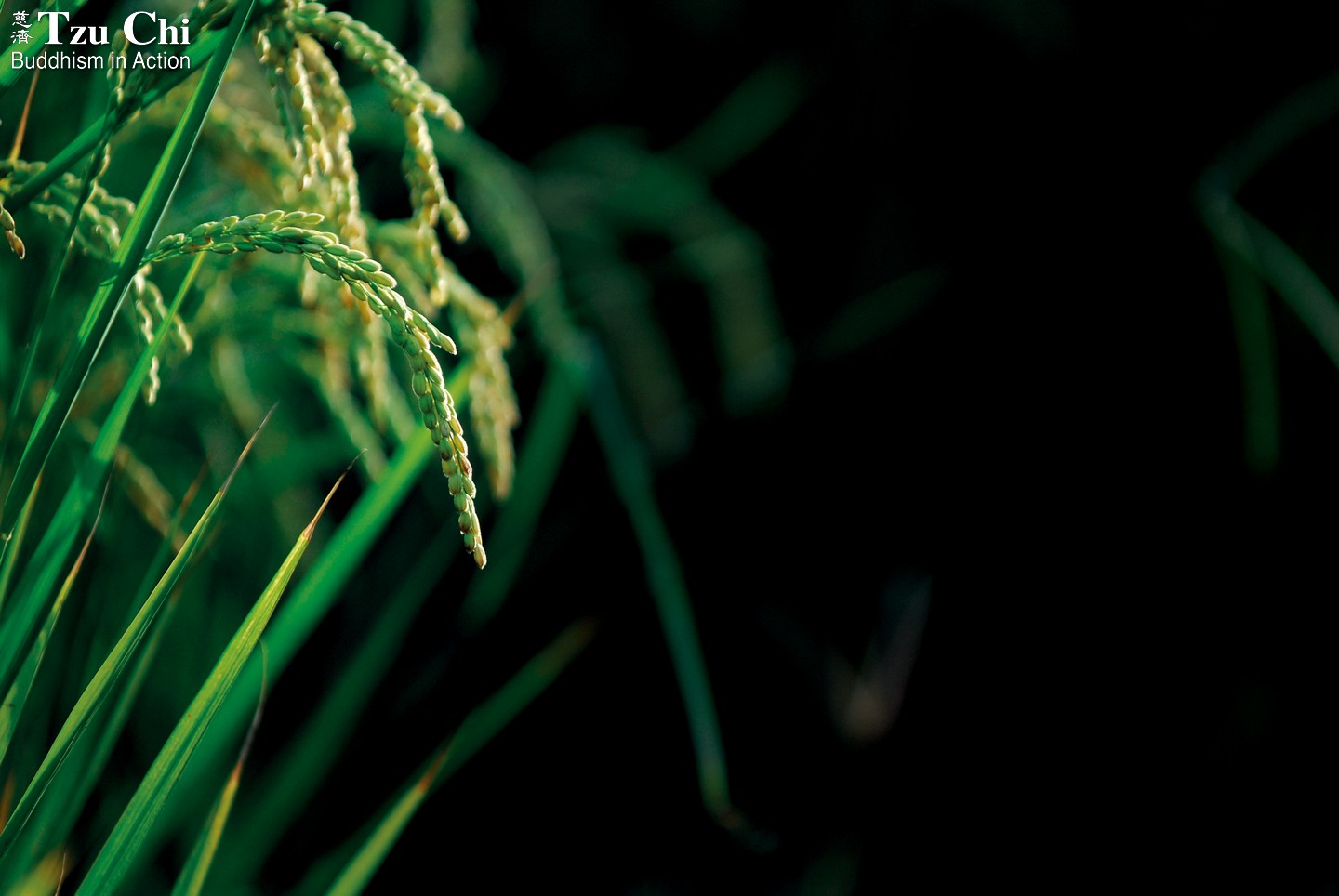By Hong Jing-jing
Translated by Wu Hsiao-ting
Photos by Huang Xiao-zhe

The gut can be considered the largest organ in the immune system, and we don’t need advanced weaponry to strengthen this fortress against disease. Everyday foods like rice, legumes, vegetables, and fruit can do the job very well.
The COVID-19 pandemic has eased, restrictions have been lifted, and masks in most places have become optional. We are now coexisting with the virus. But new infectious diseases will continue to evolve, and the next virus over the horizon could pose a global threat within just a few days. How can we fortify our immune system to combat potential infectious diseases in the future?
“Since the 1970s,” explained Vice Superintendent Lin Ming-nan (林名男) of Dalin Tzu Chi Hospital in southern Taiwan, “our world has witnessed numerous outbreaks of new infectious diseases. Over 70 percent of them have been zoonotic, meaning they are transmissible between humans and animals, and they have often been connected to our dietary habits.” He emphasized the need to adjust our dietary behaviors to enhance disease resistance.
Our body is engaged in a defensive battle every day, and the gut plays a crucial role. Dr. Lin explained that approximately 70 percent of the body’s immune cells reside in the intestines. Nutrients from the food we eat are absorbed into the bloodstream through the intestines, but pathogens—bacteria and viruses—can also hitch a ride into the digestive system with our food. It’s at this stage that the immune defenders in the gut, including T cells, macrophages, and natural killer cells, start devouring these invaders.
To boost our immune system, Dr. Lin highlights the importance of taking action to foster good gut bacteria. Plant-based diets, rich in dietary fiber, provide vital nutrients for these beneficial microorganisms. As they metabolize or ferment dietary fiber from the food we eat, they produce short-chain fatty acids and other bioactive compounds. These short-chain fatty acids can in turn bolster immunity, combat pathogens, and mitigate inflammation in the body.
Therefore, eating foods which are abundant in dietary fiber, such as whole grains, vegetables, and fruits, is one of the keys to maintaining the body’s immune system. “A whole-food, plant-based diet has a positive impact on our gut microbiota, providing numerous benefits,” Lin declared.

Photo by Huang Shi-zhe
Plant-based protein: another great ally
Protein is another essential building block to enhance the body’s resilience, serving as a valuable ally to the immune system. Beyond its core role in tissue construction, encompassing muscles, skin, and neurotransmitters, Dr. Lin pointed out that proteins also make up antibodies, vital for maintaining health. Antibodies, also known as immunoglobulins, combat bacteria and viruses, playing a pivotal role in preserving the immune system’s proper function. Moreover, proteins constitute the key components of enzymes, which are essential for catalyzing numerous chemical reactions within the body.
When it comes to foods rich in protein, there’s a traditional belief that animal-based proteins are superior to and more nutritious than those that are plant-based. But is this truly the case from a scientific perspective?
Dr. Lin countered this belief, stating, “Animal-based proteins may contain substances that affect the immune system and potentially increase susceptibility to inflammation.” He referred to a 2007 report published by the American Institute of Cancer Research and the World Cancer Research Fund. According to the report, processed meat and red meat have been classified as Group 1 and Group 2A carcinogens, linked to the development of colorectal cancer.
This report was a meta-analysis of 87 studies. (A meta-analysis is a statistical technique used in research to combine and analyze the results from multiple independent studies on a specific topic.) The unanimous conclusion was that increased red meat consumption heightens the risk of colorectal cancer. Red meat raises the risks of other cancers too, such as pancreatic, esophageal, and stomach cancers, as well as cancer-related mortality and cardiovascular disease, all of which have been confirmed in numerous scientific publications.
Yeh Chia-chou (葉家舟), the superintendent of Sanyi Tzu Chi Chinese Medicine Hospital, explained that consuming meat also entails the ingestion of various toxins that may have accumulated in the bodies of animals, including heavy metals found in deep-sea fish. These toxins can also contribute to various illnesses. He recalled a specific incident from his graduate school days when, during a dinner gathering, someone ordered a bowl of pork liver soup for everyone to share. A pathologist examined the soup for a long time before eventually deciding not to eat it. When asked why he had decided to pass on the dish, he explained, “This pig had liver cancer; I observed nodules in the liver.”

Unleashing Gut Health
Whole grains, legumes, nuts, vegetables, and fruits are rich in dietary fiber. Dietary fiber is indigestible by the human body, but it does protect intestinal mucosal cells and promote intestinal motility—the movement and contractions of muscles in the intestines.
Beneficial gut bacteria also love to feed on dietary fiber, so a deficiency in this vital nutrient can result in a reduction of the good bacteria and an increase in harmful bacteria. This in turn may compromise the integrity of the layer of mucus that lines our intestines. Given that the mucous layer serves as the first line of defense for the intestinal wall, its inadequate strength can make it easier for pathogens to infiltrate intestinal epithelial cells, triggering inflammation and negatively impacting the immune system.
Clearing misconceptions
During the COVID-19 pandemic, a study involving 2,884 healthcare workers from six countries found that their likelihood of contracting the virus was similar, regardless of whether they followed a vegetarian or non-vegetarian diet. However, further analysis showed that vegetarians had a noteworthy 73 percent lower risk of developing severe symptoms in the event of infection.
“Food not only serves as sustenance for the body but also influences physical and mental well-being and contributes to disease prevention,” says nutritionist Gao Yun-jun (高韻均), a proponent of whole-food, plant-based diets. She emphasized that a well-balanced whole-plant diet is fully capable of meeting the body’s various nutritional requirements, thus enhancing overall health and resilience.
The human body requires 20 amino acids. Nine of these are categorized as essential because the body cannot synthesize them internally—they must be obtained from dietary sources. Proteins from different foods break down into these amino acids. Understanding the concept of complementarity, or combining different foods, helps us have a well-rounded and healthy diet.
For example, common staples like rice and wheat are rich in methionine but low in lysine. Both are essential amino acids. But legumes such as chickpeas, red beans, mung beans, and lentils are just the opposite. They are low in methionine but have an abundant amount of lysine. Pairing legumes with grain-based staples allows the foods to complement each other, increasing and enhancing the quality of protein intake. It is not even necessary to eat these foods together in one meal; you can spread them out over the day and reap the same benefits.
One of the primary sources of protein for vegetarians is soybeans. Dr. Lin dispels some misconceptions about plant-based diets, saying, “There may be misunderstandings surrounding plant-based diets, such as the myth that people with gout cannot eat soybeans. That is incorrect.” He cited a 12-year study from Harvard University involving nearly 50,000 middle-aged men without a history of gout. The study found that those who consumed more meat and seafood had a higher risk of developing gout. Specifically, increasing meat consumption by one serving per day led to a 21 percent higher risk of gout, while adding one serving of seafood per week raised the risk by seven percent. The study also noted that, after developing gout, the impact of meat consumption became more pronounced as kidney function for removing uric acid declined. On the other hand, people who ate a plant-based diet high in purine, such as from legumes and mushrooms, actually showed no higher risk of acquiring gout. Plant-based purines are metabolized more efficiently than those from meat sources.
Bean products, such as tofu and dried tofu, when paired with grains, provide a rich source of protein for the body. Although legumes and mushrooms contain purines, research has indicated that purines from plant-based sources do not increase the incidence of gout and are metabolized more efficiently compared to purines found in meat.
Traditional Chinese dietary wisdom
As previously mentioned, a diet consisting of minimally processed, whole plant-based foods fosters a favorable environment for beneficial gut bacteria. Once you grasp this principle, you can enhance it by tapping into the wisdom of traditional Chinese medicine to customize your dietary choices, aligning them with your unique constitution and the season.
Superintendent Yeh Chia-chou explains that the foundation of health in traditional Chinese medicine lies in nurturing righteous qi within the body, which serves as a defense against external pathogenic influences. Qi is often translated as “energy.” You can maintain a state of righteous qi, thereby promoting overall well-being, by identifying the dietary approach most suitable for your constitution.
The superintendent recommended opting for a diverse range of food types and colors to achieve a balanced diet. He went on to explain that in traditional Chinese medicine, foods are generally categorized into three main groups:
- Cooling and cold: These foods have a calming, heat-clearing, and detoxifying effect, making them suitable for people with a hot body type, such as those who feel warm or hot more often than others. Such foods can alleviate symptoms such as insomnia, bloating, and inflammation. Examples include millet, mung beans, bitter gourds, loofahs, tomatoes, and grapefruit.
- Pungent and hot: These foods have a warming effect, making them beneficial for individuals with a cold body type, such as those who are sensitive to cold and find their extremities easily chilled. Such foods can improve functions affected by weakness, stagnancy, and anemia. Examples include glutinous rice, leeks, coriander, longans, and lychees.
- Light and easily absorbed foods: These foods are considered neutral and suitable for the general population, irrespective of body types. Examples include corn, red beans, spinach, and broccoli.

Red bean soup served warm is a beloved winter treat in Chinese societies. Combining legumes with grains can boost their nutritional benefits, as they complement each other nutritionally. You don’t have to eat them together; having them within the same day works just as well.
Besides taking your constitution into account, aligning your eating habits with the seasons and following the natural cycles is beneficial for overall health. Liao Chen-kai (廖振凱), a practitioner in the Traditional Chinese Medicine Department at Taipei Tzu Chi Hospital, emphasized that consuming foods associated with the five colors that correspond to seasonal changes aids the body in syncing with the natural environment, thereby maximizing the benefits of dietary therapy.
In traditional Chinese medicine, each season is linked with an organ system, meaning that that particular organ system is more susceptible to the effects of the seasonal transition. Furthermore, each organ system is associated with a color. For example, autumn is associated with the lungs. In autumn, consuming white foods, such as yams, lilies, snow fungus, and Chinese cabbage, benefits the lungs. In winter, consuming black foods, such as black beans, black sesame, shiitake mushrooms, laver, kelp, and black fungus, nourishes the kidneys. When spring arrives and the world is bursting with life, green foods like spinach, mung beans, edamame, and asparagus support your liver. In early summer, consuming red foods, such as carrots, red beans, red quinoa, beets, wolfberries, and red dates, can be beneficial for heart health. In late summer, incorporating yellow foods such as soybeans, pumpkins, sweet potatoes, chestnuts, and lotus seeds into your diet can strengthen the spleen. (It is important to note that traditional Chinese medicine has different concepts for the organs when compared to Western medicine, viewing them not only in terms of their physiological functions but also in a broader, holistic context that includes their energetic and emotional aspects.)
Bacteria and viruses are all around us, underscoring the importance of building a strong body that can fend off sickness and bounce back from illness effectively. One way to achieve this is by making wise food choices. Support your immune system by reducing meat intake and increasing your consumption of vegetables. With each bite, you can fortify your body’s defenses and pave the way for a healthier, more vibrant life.

Pairing grains with a variety of vegetarian ingredients meets a person’s nutritional needs.



